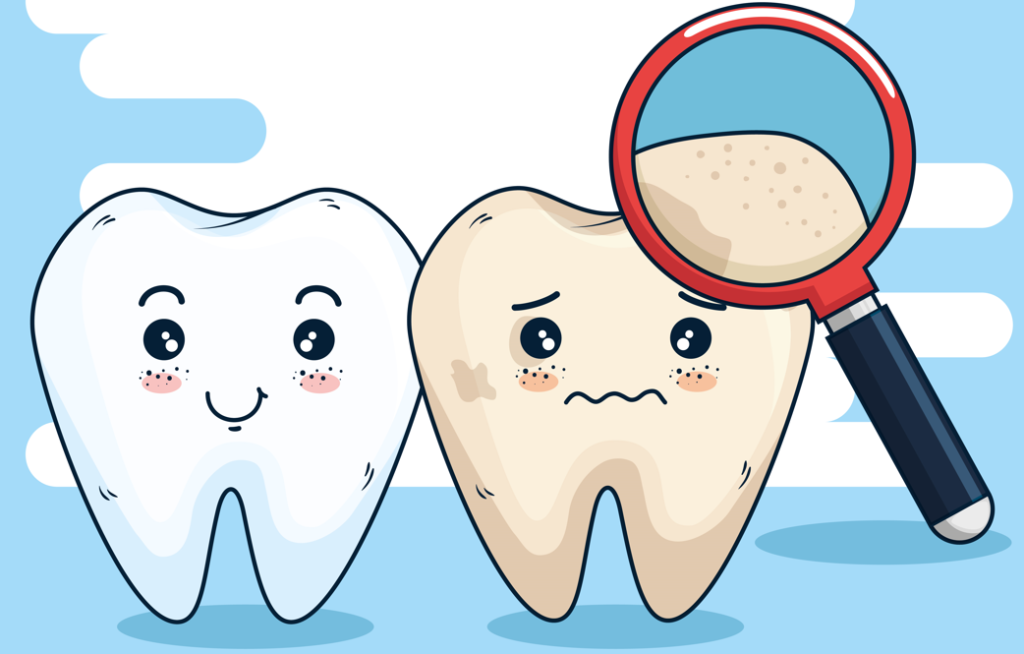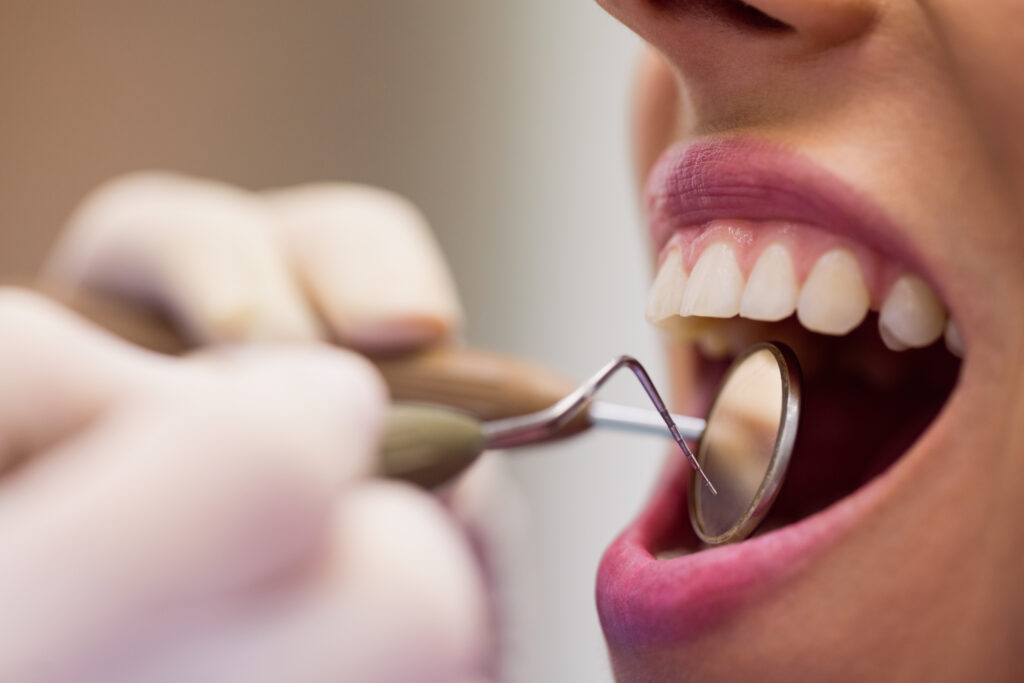Demineralization in teeth occurs when the minerals in the teeth are lost. This process happens due to the wear of the enamel. There are many potential causes for enamel erosion.
In this article, we will explain what demineralization in teeth is, its symptoms, and the treatment process in detail.
What is Demineralization in Teeth?

The hard and protective outer layer of a tooth is called enamel. Enamel provides the tooth's white appearance and protects the underlying layers from external factors.
Enamel contains various minerals, such as phosphate, calcium, magnesium, lead, and strontium. Among these minerals, calcium and phosphate are especially important. Demineralization is a process that significantly damages enamel. So, what exactly is demineralization in teeth?
Demineralization in teeth refers to the loss of these important minerals in the enamel. As a result, the enamel can no longer be as hard and protective as it once was. In the long run, this can lead to tooth decay and even tooth loss. Poor nutrition and insufficient oral hygiene can cause the depletion of these minerals.
Now that we've briefly explained what demineralization in teeth is, let's move on to the symptoms, so you can be more aware when facing this condition!
Symptoms of Demineralization in Teeth

Demineralization begins when food particles remain on the teeth after eating, allowing bacteria to form in the mouth. Additionally, poor oral hygiene and unhealthy eating habits are other causes of this issue.
Bacteria accumulate on the teeth due to insufficient oral care, leading to damage to the enamel. If you frequently consume fast food and acidic drinks in your daily life, the enamel on your teeth can suffer significant erosion!
So, how can we tell if the enamel has been damaged? Let's take a closer look...
The symptoms of demineralization in teeth are as follows:
- Formation of cavities or holes in the teeth
- Decay occurring at the points where teeth meet
- Sensitivity when consuming very hot or very cold foods
- Changes in the natural color of teeth due to enamel erosion
- Irregular appearance at the tips of the teeth
- Increased plaque and tartar formation on tooth surfaces
- Increased sensitivity of teeth due to the loss of enamel
- Formation of white spots on the surface of teeth
- Signs of inflammation in the gums (pain and swelling)
We’ve explained in detail what demineralization in teeth is, and listed the symptoms. If you notice any of these symptoms in your teeth, it is advisable to see a dentist as soon as possible. Please note that these symptoms and the information provided are for awareness purposes only and are not diagnostic.
Therefore, it is essential to visit a dentist for a proper diagnosis and treatment plan. The correct diagnosis will be made after an examination, and treatment will begin accordingly.
10 Precautions to Prevent Demineralization in Teeth!

Enamel erosion can cause many issues such as tooth decay and tooth pain. If the treatment process is delayed, it can even lead to tooth decay, pain, and loss. So, what can be done to prevent demineralization? Let's break it down into steps.
Here are the methods to prevent the formation of demineralization in teeth:
- Reducing the consumption of sugary products is important for preventing this condition. Sugar contains high levels of acid, which erodes the enamel. Continuous consumption will seriously harm the teeth.
- Consuming minerals, vitamins, and calcium is recommended to strengthen the enamel.
- Foods like seafood, grapes, and spinach are essential for fluoride. By eating these foods, you can improve your dental health.
- Brushing your teeth regularly is important to protect the enamel from bacteria.
- Using fluoride-containing toothpaste helps protect the enamel and prevent decay.
- Choosing the right toothbrush is important for your teeth. Using a hard brush can cause enamel erosion and gum bleeding. A softer, smaller brush is recommended. These brushes clean your teeth without damaging them and also clean your gums thoroughly due to their smaller size.
- It is necessary to avoid excessive consumption of starchy foods. Foods like potatoes, bread, and rice can increase the sugar content and cause enamel erosion.
- Water, being rich in minerals, is very beneficial for dental health. It also helps reduce the effects of sugar and acid on the teeth.
- You should avoid brushing your teeth immediately after eating. Since food softens the enamel, brushing right away can cause enamel erosion. It is healthier to brush your teeth about half an hour after eating. During this time, the mouth’s pH returns to normal, and the enamel regains its hardness.
- Dry mouth is one of the causes of enamel depletion. If you have dry mouth, you can use sugar-free gum and saliva-stimulating mouthwashes to increase saliva production.
Damage to the enamel can lead to significant issues such as tooth decay and tooth loss. To prevent this, you can apply the steps mentioned above. Additionally, you should not ignore the recommendations of your dentist!
What is Remineralization?

We have explained what demineralization is and its symptoms in detail. Now, let's talk about the process of remineralization, the opposite of demineralization.
Remineralization is the process by which enamel heals. During this process, the enamel regains the minerals it has lost and becomes stronger. So, what are the signs of remineralization? Let's list them below...
Symptoms of Remineralization in Teeth
Remineralization is the process of the teeth returning to their previous health. This process can be supported by proper oral hygiene, healthy eating, and avoiding harmful habits like smoking.
There are several ways to tell if your teeth are regaining health during this process. Let's list them below...
The symptoms of remineralization in teeth are:
- The surface of the teeth appears smooth
- General pain and sensitivity decrease
- White and brown spots on the teeth disappear
- Gum swelling decreases and becomes healthier
- The formation of plaque decreases, and the teeth appear healthy and well-maintained
The symptoms of remineralization indicate that the enamel is being preserved and the teeth are becoming healthier. It is crucial to prevent demineralization to maintain dental health. If this process progresses, oral and dental health deteriorates, leading to tooth decay, sensitivity, and inflammation.
Treatment for Demineralization in Teeth

We have covered what demineralization in teeth is in our previous sections. Demineralization is a dental problem caused by the loss of enamel. Many people experience this dental problem. Treatment methods for demineralization are frequently researched.
If the demineralization is not too severe, you can restore your teeth to their original health with some precautions. Drinking plenty of water, avoiding acids and sugar, and brushing regularly are some of these measures. For those experiencing significant decay or tooth loss due to demineralization, it is essential to see a dentist for treatment. In this case, the dentist may perform fillings, root canal treatment, or implant procedures.
For more detailed information about the implant process, you can check out our other article.
You may be interested in : "Everything About Root Canal Treatment | Updated Prices 2024"
Contact Us!

In this article, we explained what demineralization in teeth is. We also discussed its symptoms and how to prevent it. If you have other questions about demineralization, feel free to contact us.
If you have a dental issue or simply want a checkup, you can visit our clinic and benefit from our free initial examination service.
For detailed information about our services,
CLICK HERE: "OUR SERVICES"

 English
English Turkish
Turkish Deutsch
Deutsch العربية
العربية![[:en]What is Demineralization in Teeth? 10 Steps to Protect Your Teeth![:tr]Dişlerde Demineralizasyon Nedir? 10 Adımda Dişlerinizi Koruyun![:de]Was ist Demineralisation in den Zähnen? 10 Schritte zum Schutz Ihrer Zähne![:ar]ما هي إزالة المعادن من الأسنان؟ ١٠ خطوات لحماية أسنانك![:] Dişlerde Demineralizasyon Nedir?](https://proestetik.com.tr/wp-content/uploads/2024/11/dislerde-demineralizasyon-nedir.11.jpg)










